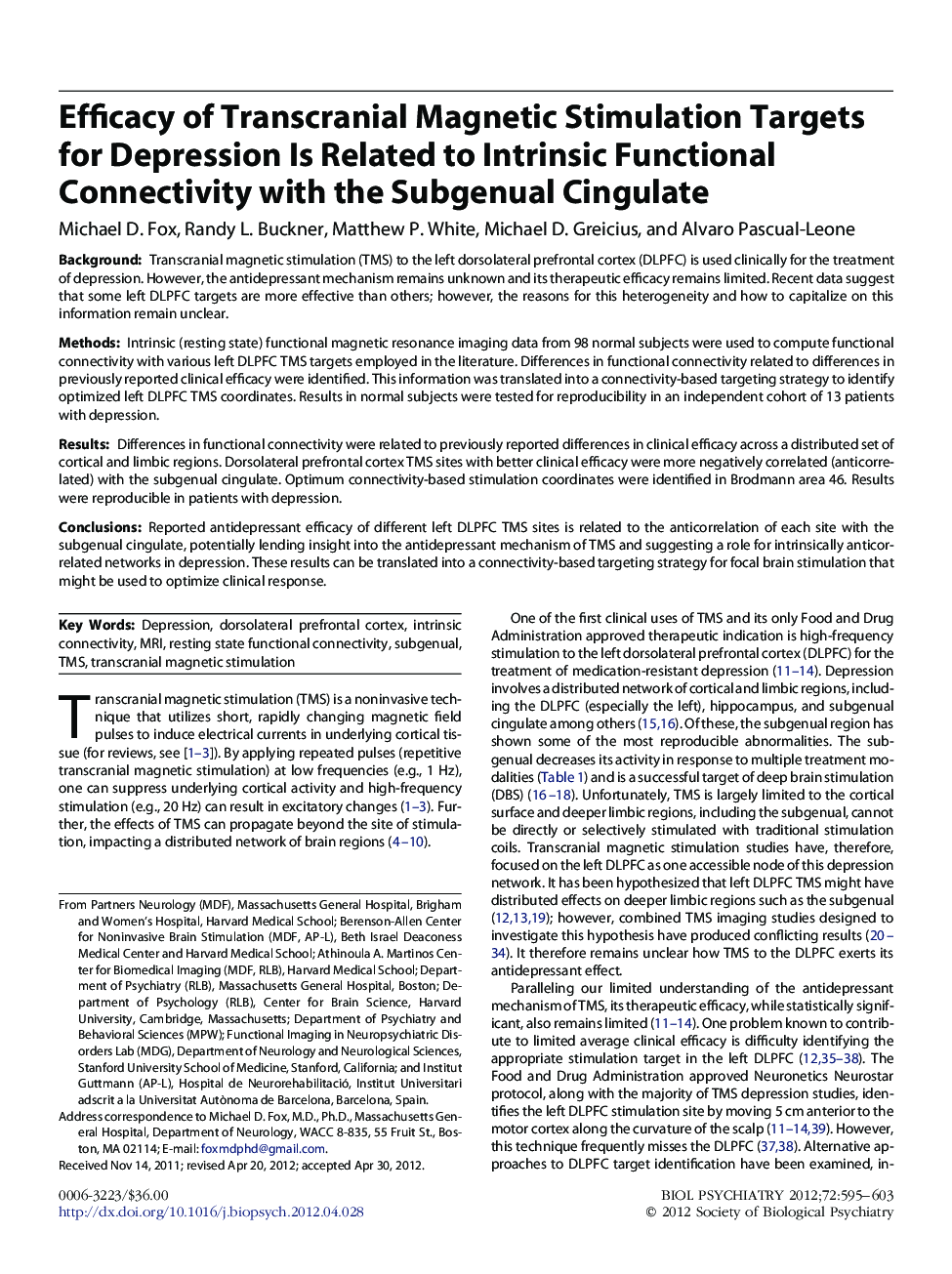| کد مقاله | کد نشریه | سال انتشار | مقاله انگلیسی | نسخه تمام متن |
|---|---|---|---|---|
| 6227535 | 1276457 | 2012 | 9 صفحه PDF | دانلود رایگان |

BackgroundTranscranial magnetic stimulation (TMS) to the left dorsolateral prefrontal cortex (DLPFC) is used clinically for the treatment of depression. However, the antidepressant mechanism remains unknown and its therapeutic efficacy remains limited. Recent data suggest that some left DLPFC targets are more effective than others; however, the reasons for this heterogeneity and how to capitalize on this information remain unclear.MethodsIntrinsic (resting state) functional magnetic resonance imaging data from 98 normal subjects were used to compute functional connectivity with various left DLPFC TMS targets employed in the literature. Differences in functional connectivity related to differences in previously reported clinical efficacy were identified. This information was translated into a connectivity-based targeting strategy to identify optimized left DLPFC TMS coordinates. Results in normal subjects were tested for reproducibility in an independent cohort of 13 patients with depression.ResultsDifferences in functional connectivity were related to previously reported differences in clinical efficacy across a distributed set of cortical and limbic regions. Dorsolateral prefrontal cortex TMS sites with better clinical efficacy were more negatively correlated (anticorrelated) with the subgenual cingulate. Optimum connectivity-based stimulation coordinates were identified in Brodmann area 46. Results were reproducible in patients with depression.ConclusionsReported antidepressant efficacy of different left DLPFC TMS sites is related to the anticorrelation of each site with the subgenual cingulate, potentially lending insight into the antidepressant mechanism of TMS and suggesting a role for intrinsically anticorrelated networks in depression. These results can be translated into a connectivity-based targeting strategy for focal brain stimulation that might be used to optimize clinical response.
Journal: Biological Psychiatry - Volume 72, Issue 7, 1 October 2012, Pages 595-603